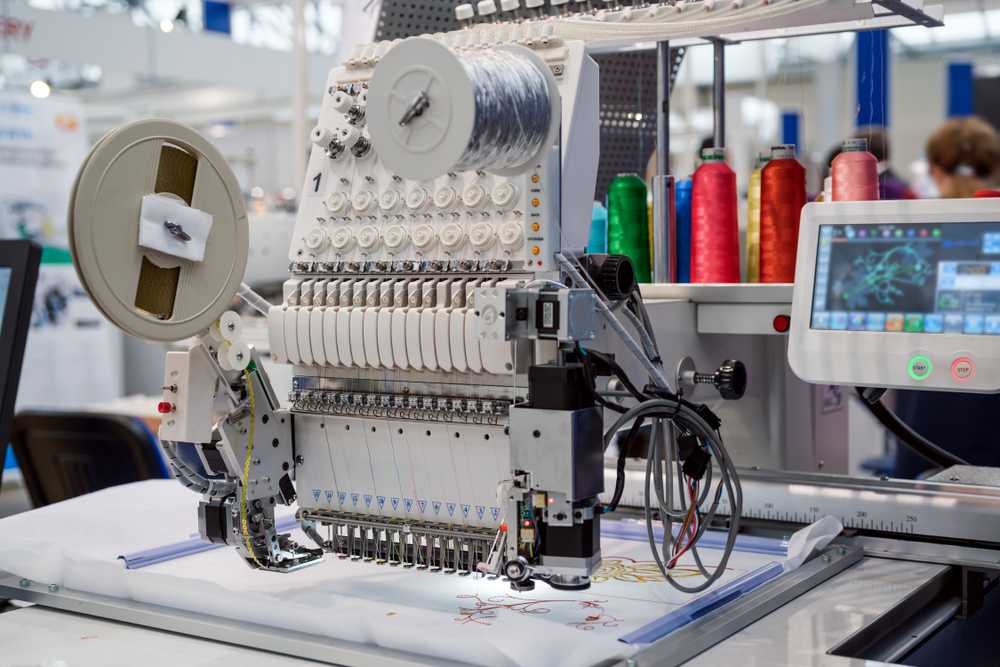Professional Digitizing for Embroidery: High-Quality Designs
Wiki Article
Streamlining the Art of Embroidery Digitizing: Step-by-Step Overview
As innovation proceeds to development, the digitization process has become extra available, allowing fanatics to bring their intricate styles to life with simplicity. In this overview, we will certainly unwind the intricacies of embroidery digitizing, breaking down each step carefully to simplify the procedure and empower both novices and seasoned embroiderers alike.Recognizing Needlework Digitizing Software Application
Embroidery digitizing software works as a vital device for changing elaborate designs into electronic styles suitable with needlework machines, helping with accurate stitching and personalization. This customized software allows individuals to import numerous image data styles, such as JPG or PNG, and transform them into embroidery machine-readable formats like DST, EXP, or PES - Digitizing for Embroidery. By using features like stitch editing, underlay choices, and thread color option, digitizing software makes it possible for individuals to regulate every facet of the layout processFurthermore, progressed needlework digitizing software program provides tools for developing complicated layouts, changing stitch thickness, and including elaborate details. Customers can additionally preview the design before sewing it out, ensuring precision and minimizing mistakes. Furthermore, lots of software program programs give automated features that help streamline the digitizing process, saving time and effort.
Recognizing the capabilities of needlework digitizing software application is necessary for accomplishing top notch outcomes in embroidery jobs. By understanding this tool, embroidery fanatics and professionals can unleash their creativity and bring elaborate styles to life with precision and performance.

Selecting the Right Design Data
After familiarizing on your own with the capacities of needlework digitizing software, the next important step in the process is picking the best layout data for your job. Digitizing for Embroidery. When choosing a layout file for embroidery digitizing, it's essential to take into consideration the complexity of the design, the dimension of the end product, and the sort of material you will be dealing withFor intricate layouts with fine information, a high-resolution picture or vector documents is suggested to make certain that the needlework device can precisely reproduce the design. In addition, the dimension of the end product plays a considerable function in choosing the right design documents. Larger designs might call for greater resolution files to preserve clearness and intensity.
Furthermore, the kind of textile you will certainly be embroidering on influences the choice of layout documents. Different materials might call for changes in the layout documents to guarantee that the stitches are correctly straightened and the style looks like planned. By meticulously selecting the ideal style data based upon these factors, you can establish on your own up for an effective needlework digitizing procedure.
Digitizing Tools and Strategies
Making use of specialized software application and accuracy techniques, digitizing devices are crucial in transforming complex designs right into embroidery-ready data. Embroidery digitizing software program, such as Wilcom, Hatch, or Embrilliance, supplies the needed system to transform art work right into stitch data. These programs use functions like stitch editing and enhancing, rug choices, and lettering devices to guarantee the design converts flawlessly onto material.One of the key strategies in digitizing is creating a clear course for the embroidery device to follow. This includes digitizing each aspect of the style with precision, figuring go to this website out stitch kinds, densities, and directions. By utilizing devices like digitizing tablet computers or software-specific plugins, embroiderers can attain a high level of accuracy in their digitized designs.
Additionally, understanding the art of rug stitching is vital for creating high quality embroidery. Underlay stitching stabilizes the material and produces a structure for the design, making sure that the end product is both visually attractive and resilient. By recognizing these digitizing devices and strategies, embroiderers can raise their craft and bring complex designs to life with accuracy and effectiveness.
Personalizing Stitch Types and Instructions
The option of stitch kinds can dramatically affect click here for info the general appearance and appearance of the stitched style. By purposefully combining these stitch types, embroiderers can achieve deepness and measurement in their designs.Moreover, the direction of stitches plays a vital function in enhancing the visual appeal of the last needlework. Varying stitch directions can add appearance, highlight certain components, and produce visual passion. For circumstances, changing the angle of stitches can imitate activity or all-natural patterns like hair or feathers. By trying out with various stitch angles and patterns, embroiderers can bring their styles to life with impressive detail and complexity. Grasping the art of personalizing stitch kinds and directions encourages embroiderers to unleash their creativity and elevate the high quality of their work.
Testing and Refining Your Digitized Style
To ensure the precision and quality of your digitized layout, thorough testing and improvement are vital actions in the embroidery digitizing process. When you have finished the digitization of your layout, it is vital to examine it prior to waging the actual needlework. Testing permits you to determine any kind of prospective issues such as string breaks, sew thickness troubles, or style distortions that might influence the final result.
After testing, it is very important to refine your digitized layout based upon the feedback from the test sew-out. This might involve tweaking stitch setups, adjusting densities, or making changes to the overall design to achieve the desired result. By repeating through testing and refinement, you can tweak your digitized layout to excellence before relocating onward with the actual embroidery procedure.
Final Thought
In verdict, understanding the art of embroidery digitizing needs a complete understanding of the software, selecting the appropriate style documents, making use of digitizing tools read more and methods, customizing stitch types and instructions, and screening and refining the digitized layout. By complying with these steps, embroiderers can streamline the digitizing procedure and create top notch embroidered styles with accuracy and performance.Report this wiki page